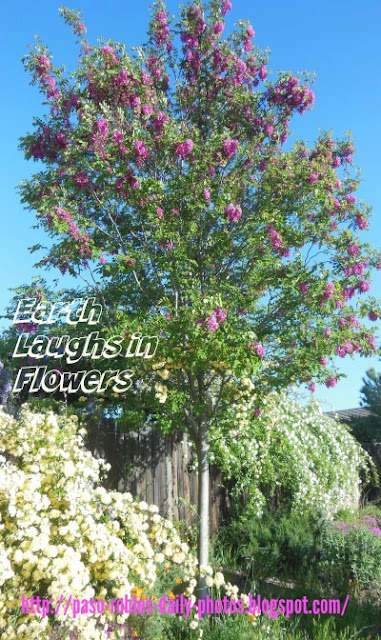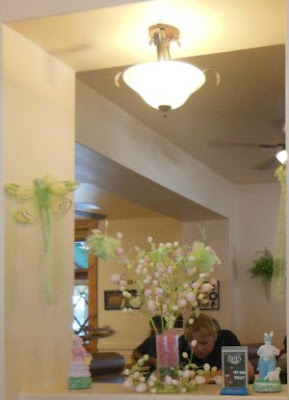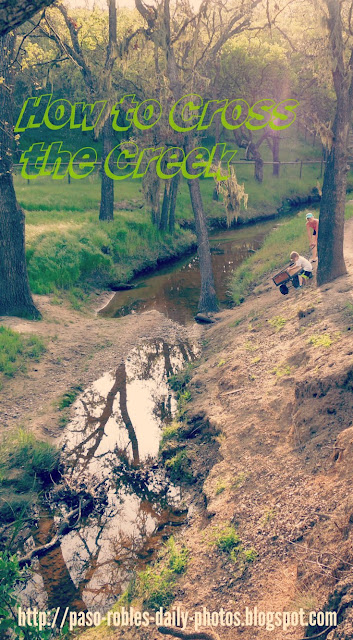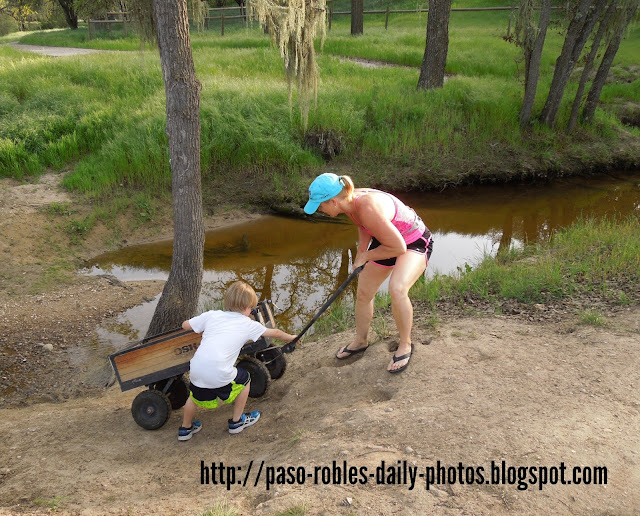Most of us have read the Emerson quote, "Earth laughs in flowers." Many people may associate it with the coming of spring. I confess it certainly expresses what I feel when barren vines, trees, and shrubs suddenly burst into bloom, the irises and other bulbs emerge, and ground that was empty becomes alive with new seedlings that soon flower. When the earth seems almost dead, it suddenly explodes into a mass of color below our feet and above our heads.
"Earth laughs in flowers" is just part of the poem "Hamatreya" by Ralph Waldo Emerson. Here is the quote in context, although there is a similar theme in the rest of the poem I've not quoted.
Bulkeley, Hunt, Willard, Hosmer, Meriam, Flint,
Possessed the land which rendered to their toil
Hay, corn, roots, hemp, flax, apples, wool, and wood.
Each of these landlords walked amidst his farm,
Saying, “’Tis mine, my children’s and my name’s.
How sweet the west wind sounds in my own trees!
How graceful climb those shadows on my hill!
I fancy these pure waters and the flags
Know me, as does my dog: we sympathize;
And, I affirm, my actions smack of the soil.”
Where are these men? Asleep beneath their grounds:
And strangers, fond as they, their furrows plough.
Earth laughs in flowers, to see her boastful boys
Earth-proud, proud of the earth which is not theirs;
Who steer the plough, but cannot steer their feet
Clear of the grave.
As
Karen Joslin states in her blog post on this poem,
the quote is often taken out of context. It is not a joyous tribute to spring, but rather a statement of man's arrogance in thinking he is dominant over nature. I would prefer to say that although God gave humankind dominion over the earth in the sense of using it and caring for it, humans do not outlast the earth. As the Bible states, they came from the earth and will return to it, and no man can prevent that.
Vicki Lane
states in her blog on this quote that perhaps the flowers we see at funerals are "earth's last laugh." I prefer to think
flowers are God's gifts to make our sojourn here more pleasant or to reward those who worked hard to plant and care for them. The flowers in these photos were taken of my neighbor's side yard. It's beside the mailbox when I go to get my mail. I have seen her working hard to care for her plants year round. I'm sure she must feel rewarded for that work as she sees the results now. The photo above showed one of my favorite parts of this garden by the sidewalk. The one below covers more of the garden in less detail.
The orange flowers are poppies, the purple are iceplant. As far as I can tell, the masses of flowers on the fence are roses or rose relatives. The pale yellow ones smell like roses but they are in small clumps of several small flowers. I put a closer look at just those flowers below. The white ones spilling over the fence are definitely roses.
What do you think? Are flowers meant as joy for our journey, a reward for our gardening labors, or "earth's last laugh"?
I have put many of my flower photos on blank greeting cards you can see in this
Zazzle floral card collection. One of the cards shows a scene from the garden in the photos above.
Here is a sampling of
products that use the quote: "Earth laughs in flowers." most designs have been placed on many different products which you will see if you click through.
&






























